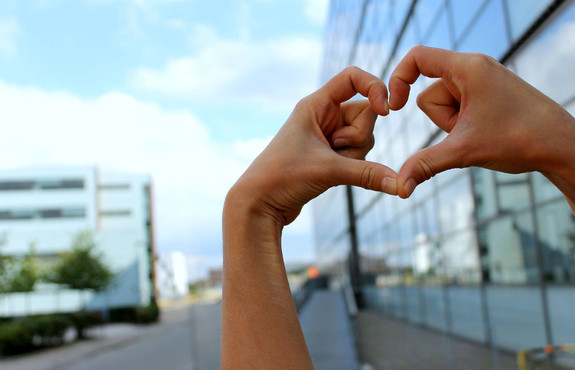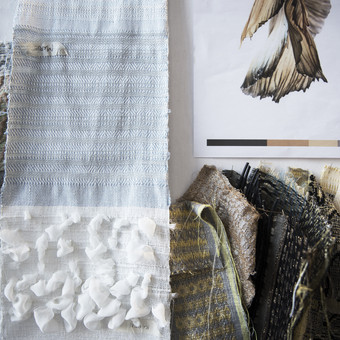Facts
Quota 2: 15 March at 12.00 noon
Quota 1: 5 July at 12.00 noon
Why should I study Industrial Design?
Do you find it exciting to combine aesthetic design with functional aspects, production technology possibilities and human considerations? And also to develop concepts and products based on the visionary notions of the future that your design will help create? Then Industrial Design is probably right for you. It is an opportunity to make a difference, both for people and for the environment.
What will I learn?
Your toolbox will also contain basic skills within the areas of concept and product development, and you will gain insight into disciplines such as service design and behavioural design as well as learn how to initiate design processes.
You will come to understand and master construction principles and gain knowledge about different materials, their properties and how they are processed.
You will also learn to create prototypes and models, including 3D modelling and visualisations and acquire a perception of industrial working and production methods.
Industrial designers must be able to generate ideas, create designs, comprehend functions and know how to collaborate with companies (and also be knowledgeable about business models, communication and branding). They must also be able to collaborate with other professions.
Industrial designers are responsible for creating solutions that are meaningful for people as well as the environment, so you will discover that the programme has a broad focus on sustainability and also incorporates users in the design process.
In the course of your studies you will have the opportunity to spend a semester at a design school abroad. For example, you may want to specialise even more within an area of specific interest to you.
What is the best way to learn?
The courses will typically alternate between theoretical presentations, workshops, method-specific instruction, project work (in groups or individually) and field work.
It’s important to us that you learn to be proactive in the projects, make decisions and drive the process towards a goal. Design is not a desk job, so much of the knowledge you gain will come from field studies, where you will be in touch with several different user groups, companies and different disciplines. The projects alternate between individual projects and group work and between experimental projects aimed at design competitions and more narrowly defined projects in collaboration with companies. In addition, there will be projects where you will work with design students from other lines of study, for example Communication Design or Textile Design.
We have some excellent workshops, where you can work with different materials—e.g. wood, metal, plastic and leather—as well as digital workshops, where you can develop and visualise your project through, for example, animations, renderings and 3D prints.
You will have your own study space, where you can work on the projects when you don’t have classes; hence you will always have your own base in the same room as your fellow students. You also have the opportunity to participate in study trips to more distant parts of the world, which will give you a chance to gain a greater cultural understanding and test your skills in a novel context.
Typically there are other activities in addition to the scheduled ones, which can be social activities (e.g. the school’s Friday bar) or professional activities, such as afternoon workshops or internal 'competitions'. In the 'competitions' you can challenge any student from the Industrial Design programme to see who can make, for example, the best, the funniest or the wildest design (of a nail file, a drone, a lawn mower, a life boat, etc.) in two weeks.
What job can I get?
We live in a physical world, where the products we surround ourselves with and the way we use these products are of great importance, both for how we relate to each other and for the environmental footprints we make.
Your role as an industrial designer could range from the more classic, where you develop new products (which can be anything from chairs, groundwater pumps and razors to drone delivery mailboxes, where packages are delivered and picked up), to other types of roles, for example as a project manager in the public sector focussing on health innovation and development of concepts for patients' journey from the first meeting with the hospital until their discharge.
Værksteder
Selected BA projects
ba-projekter
Udveksling
Important to know when you apply
This is because the disciplines overlap in some fundamental aspects – and this way you will know which programme and specialisation matches your motivation and way of working, and be able to decide the direction for you, with the guidance of your teachers.
Accessory Design and Industrial Design both focus on spatial sketching and formgiving using analogue and digital tools such as 3D computer design. At the same time you will be trained in developing concepts, products and business ideas, which are sustainable, commercially valid and socially responsible.
Aesthetics and sensuousness characterise both disciplines, but where Accessory Design typically focuses on expressive and conceptual products with a direct relation to the body, for instance shoes, bags and jewellery, Industrial Design focuses more on functional products that relate to people in a wider contextual perspective, ranging from the utility items in your home such as lamps and electric kettles, to products applied in professional contexts. This could be blood pressure monitors or equipment for the robotics industry.
Admission
Do you dream of becoming a designer? Take the first step and apply for admission. The deadline is 15 March at 12 noon for quota 2 applicants and 5 July at 12 noon for quota 1 applicants. Apply via optagelse.dk
PLEASE NOTE: The language of instruction is Danish
Application and admission
Studiehåndbogen
Programme Manager
Per Voss Nielsen has a master's degree in Industrial Design from Design School Kolding. After graduating, he worked as a design and innovation consultant in a local design company with clients varying from large international companies to smaller start-ups. Per Voss Nielsen has been a teacher at Design School Kolding since 2020 and was appointed head of Industrial Design in 2022.













